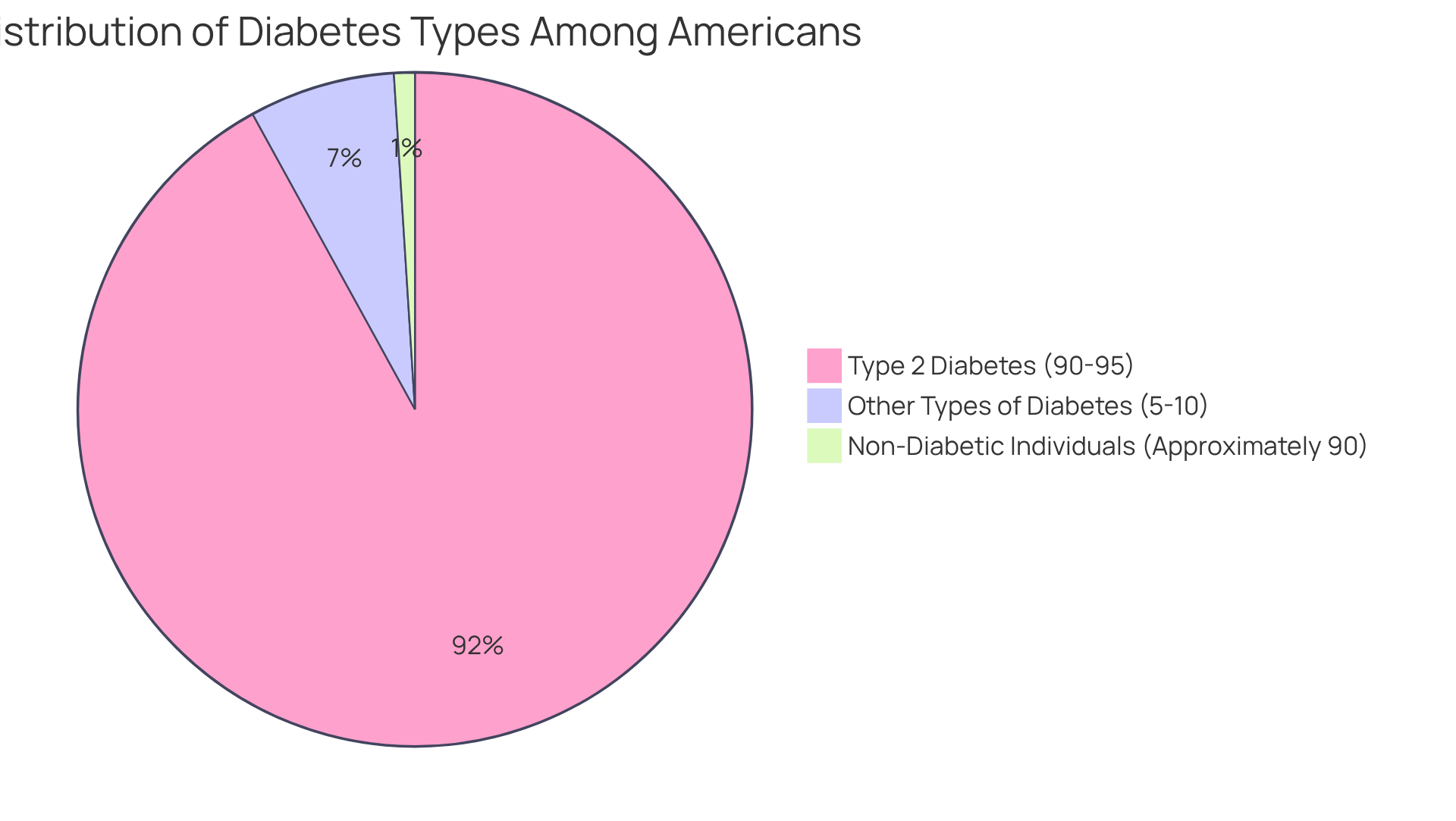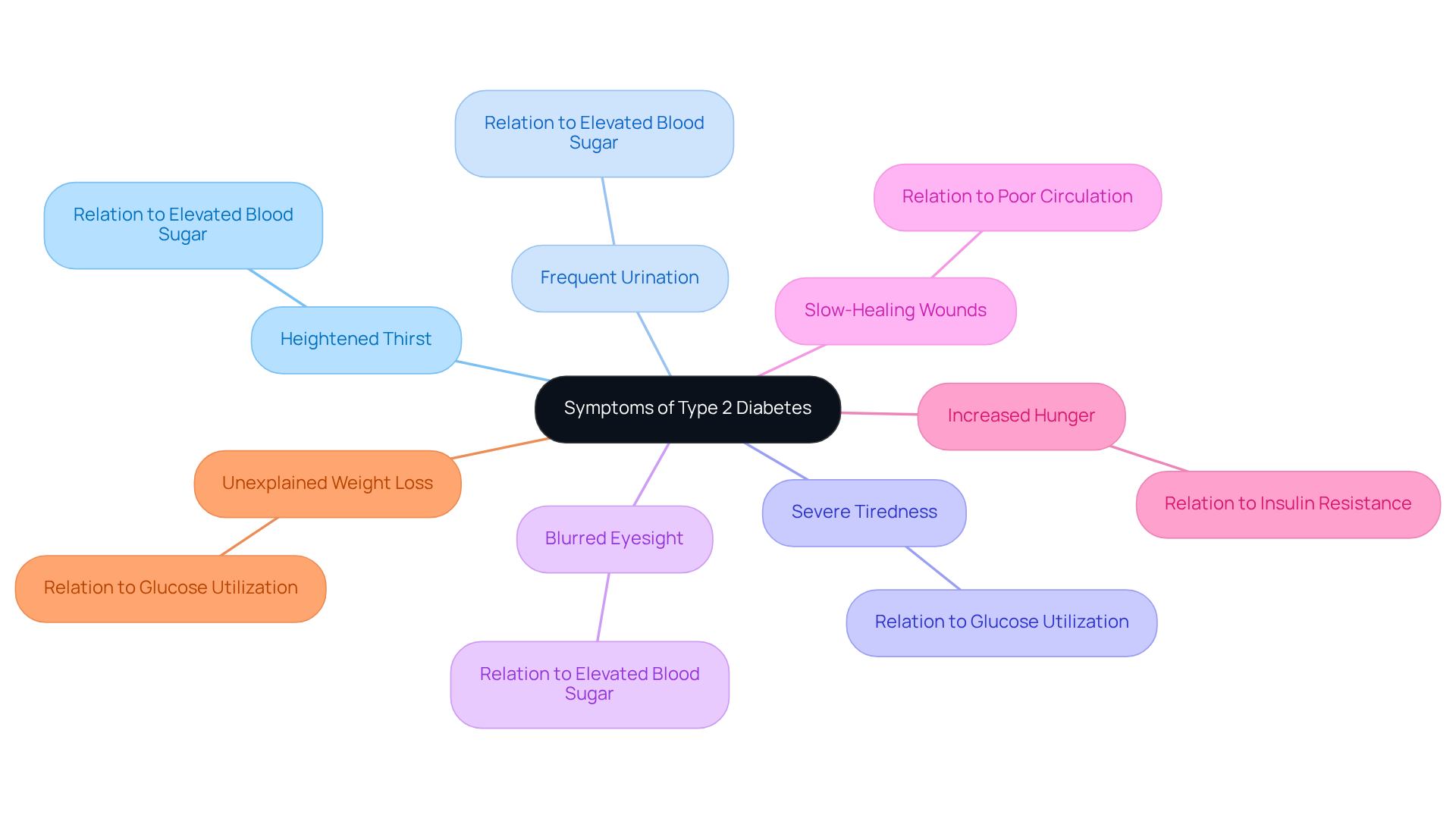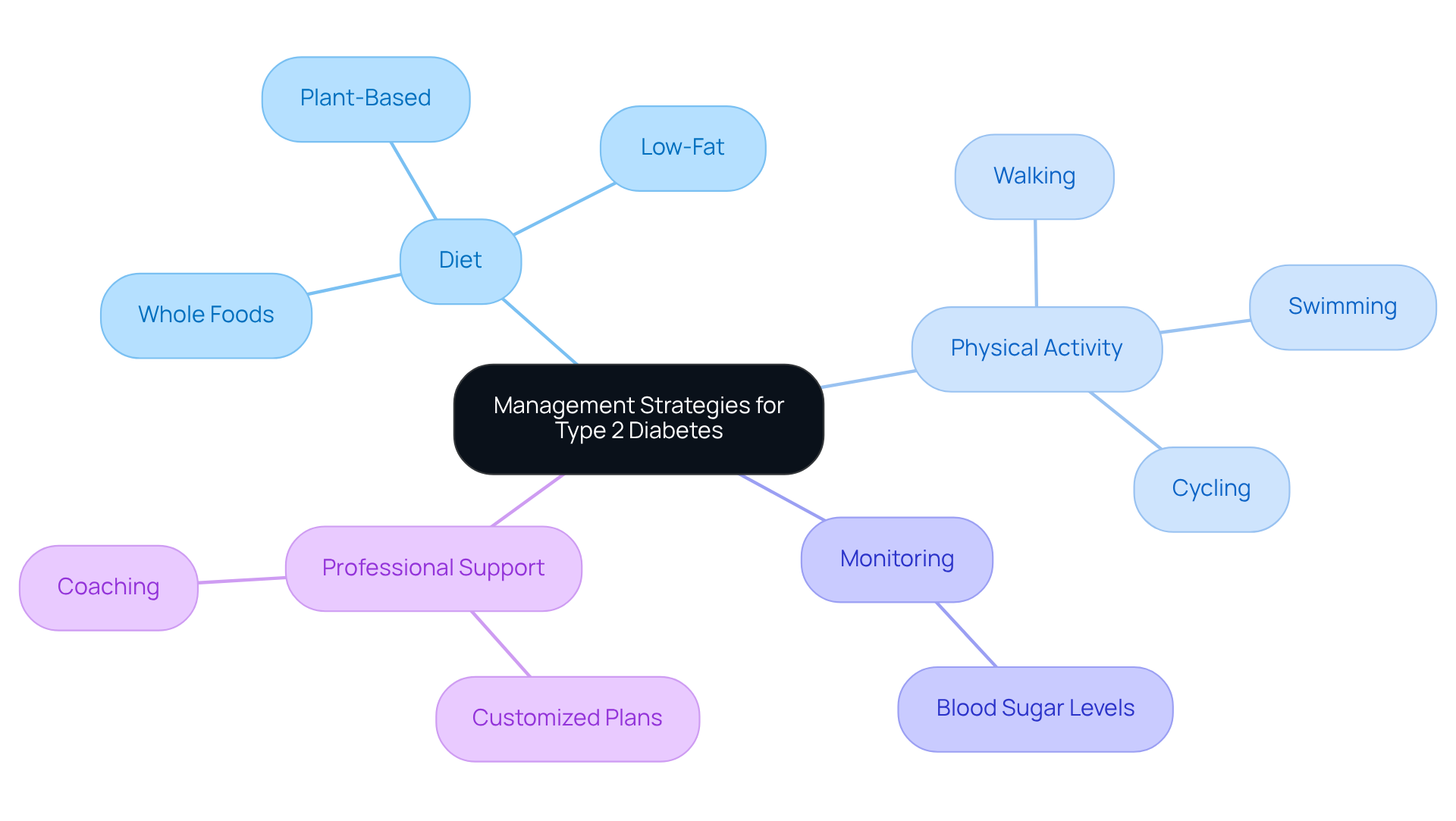Overview
This article addresses the symptoms and management strategies for individuals living with type 2 diabetes, acknowledging the challenges they face and the significant health implications of this condition. It’s important to recognize that effective management can lead to improved health outcomes. By adopting a balanced diet, engaging in regular physical activity, and vigilantly monitoring blood sugar levels, many patients find that they can achieve better glucose control and even potential remission.
Consider how lifestyle changes can truly transform your health. Imagine feeling more energized and in control of your diabetes. Evidence shows that these changes can lead to significant benefits. Embracing this journey might feel daunting, but with the right support and strategies, it is entirely possible.
We invite you to explore the 30-Day Diabetes Reset program, designed to guide you through this process with compassion and understanding. Remember, you are not alone in this; there is a community ready to support you every step of the way.
Introduction
Type 2 diabetes is more than just a personal health issue; it represents a growing epidemic affecting millions across the globe. With over 37 million Americans currently living with this condition, it’s crucial to understand the symptoms and management strategies that can significantly improve quality of life and public health outcomes.
It’s important to recognize that alarming trends show an increase in diagnoses among younger populations, raising urgent questions:
- How can individuals effectively navigate their diagnosis?
- What proactive steps can be taken to manage this complex condition?
Many patients find that addressing these questions is the first step toward reclaiming their health and well-being.
Define Type 2 Diabetes and Its Prevalence
Type 2 diabetes is a long-term condition that can feel overwhelming, as it involves the body’s struggle to use insulin effectively, leading to insulin resistance. This challenge significantly impacts how the body processes glucose, which is vital for energy. As we look ahead to 2025, it’s important to note that over 37 million Americans are navigating this condition, which contributes to the type 2 diabetes population, with about 90-95% of these cases classified as Type 2. The rise in these numbers is concerning and is largely linked to increasing obesity rates, sedentary lifestyles, and poor dietary choices.
It’s particularly alarming that Type 2 diabetes is now being diagnosed more frequently in younger individuals, including children and adolescents. This trend reflects the troubling rise in childhood obesity rates. The implications of this epidemic extend beyond personal health, creating significant public health challenges. These include rising healthcare costs and an increased risk of complications such as cardiovascular disease, kidney failure, and vision loss. Many patients find that hospital safety issues, like medication errors and infections, can worsen these complications, highlighting the need for comprehensive wellness solutions.
Understanding the prevalence and implications of the type 2 diabetes population is vital. It affects not just individual lives but also the broader community, as approximately 1 in 10 Americans is living with this illness. This statistic emphasizes the extensive nature of the problem and the importance of recognizing its impact on public health and quality of life. Together, we can work toward healthier living and support one another in navigating this journey.
Identify Common Symptoms of Type 2 Diabetes
If you or someone you care about is experiencing symptoms like heightened thirst, frequent urination, severe tiredness, blurred eyesight, or slow-healing wounds, it’s important to recognize that these could be signs of sugar intolerance. Many individuals also report feelings of increased hunger or unexplained weight loss. These symptoms often arise from elevated blood sugar levels and the body’s struggle to utilize glucose effectively. For instance, fatigue and increased thirst are common experiences that can significantly impact daily life.
Many patients find that early recognition of these symptoms can lead to timely medical intervention and necessary lifestyle adjustments. It’s crucial to seek a proper evaluation and diagnosis if you notice these signs. Remember, you’re not alone in this; many have faced similar challenges and successfully managed their condition. By taking proactive steps, you can work towards a healthier future. Seeking guidance from healthcare professionals is an essential part of this journey, helping to prevent complications and improve overall well-being.
Implement Effective Management Strategies for Type 2 Diabetes
Managing the type 2 diabetes population can feel overwhelming at times, but with the right approach, it becomes much more manageable. A balanced diet and regular physical activity are essential, along with vigilant monitoring of blood sugar levels and maintaining a healthy weight. Have you considered how a diet rich in whole foods—like vegetables, lean proteins, and whole grains—can significantly stabilize your blood sugar levels? Many individuals in the type 2 diabetes population find that adopting a low-fat, whole food, plant-based diet leads to substantial improvements in blood glucose control, with some even achieving full remission.
Physical activity is another crucial component. Activities such as walking, swimming, or cycling not only help regulate weight but also enhance insulin sensitivity, which is vital for effective blood sugar management. It’s important to recognize that monitoring your blood sugar levels can empower you, allowing you to see how your dietary and lifestyle choices directly impact your condition.
Working alongside medical professionals or coaches to create a customized management plan tailored to your personal needs and goals can be incredibly beneficial. By implementing these strategies, you can take proactive steps to manage your diabetes, leading to improved health outcomes and a better quality of life. Remember, you are not alone in this journey; support is available every step of the way.
Conclusion
Type 2 diabetes represents a significant public health challenge, affecting millions and reflecting a growing trend among younger populations. It’s important to recognize that understanding this condition is crucial not only for individuals living with diabetes but also for communities striving to address its widespread impact. The statistics reveal a stark reality: as obesity rates rise and lifestyles become more sedentary, the prevalence of Type 2 diabetes continues to climb, necessitating urgent attention and action.
Many patients find that recognizing the symptoms associated with Type 2 diabetes—such as increased thirst, fatigue, and blurred vision—can lead to timely interventions and lifestyle changes that significantly improve health outcomes. By taking proactive measures, such as adopting a balanced diet and engaging in regular exercise, individuals can empower themselves to take control of their condition. This demonstrates that with the right support and resources, substantial improvements in quality of life are possible.
Addressing Type 2 diabetes requires a collective effort, from individuals seeking to manage their health to communities working to create supportive environments. By raising awareness and encouraging healthy lifestyle choices, society can combat this epidemic and improve the well-being of those affected. Engaging in discussions about diabetes management and supporting one another can foster a healthier future for all. Together, we can create a supportive community that encourages each other on the journey toward better health.
Frequently Asked Questions
What is Type 2 diabetes?
Type 2 diabetes is a long-term condition in which the body struggles to use insulin effectively, leading to insulin resistance and impacting how glucose is processed for energy.
How prevalent is Type 2 diabetes in the United States?
As of 2025, over 37 million Americans are living with Type 2 diabetes, which accounts for about 90-95% of all diabetes cases.
What factors contribute to the rise in Type 2 diabetes cases?
The increase in Type 2 diabetes cases is largely linked to rising obesity rates, sedentary lifestyles, and poor dietary choices.
Who is being diagnosed with Type 2 diabetes more frequently?
There is a concerning trend of more frequent diagnoses of Type 2 diabetes in younger individuals, including children and adolescents, which is associated with rising childhood obesity rates.
What are the public health implications of Type 2 diabetes?
The implications include rising healthcare costs and an increased risk of complications such as cardiovascular disease, kidney failure, and vision loss.
What challenges do Type 2 diabetes patients face in healthcare settings?
Many patients encounter hospital safety issues, such as medication errors and infections, which can exacerbate their complications.
How widespread is Type 2 diabetes in the American population?
Approximately 1 in 10 Americans is living with Type 2 diabetes, highlighting the extensive nature of the issue and its impact on public health and quality of life.


